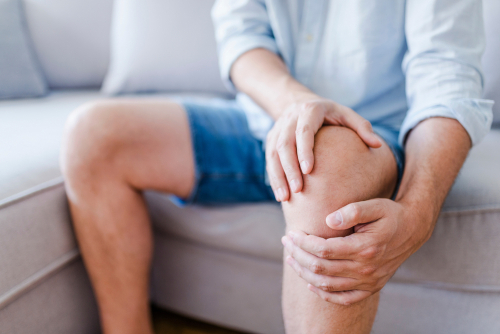
A randomized trial published in BMC Musculoskeletal Disorders observed significant benefits for patients with osteoarthritis (OA) of the knee treated with mobilization with movement (MWM) compared to sham treatment.
“Few studies have investigated the effects of mobilization with movement (MWM) in patients with knee osteoarthritis (OA) compared to other procedures. Sham procedures are generally more appropriate control than using no or usual treatments,” the study authors observed. “Moreover, studies investigating the widespread hypoalgesic effects of MWM in patients with knee OA are lacking.”
To conduct this double-blind trial, the researchers recruited 40 adult knee OA patients, who were randomized to either MWM treatment or sham MWM. The primary outcome measures included visual analog scale (VAS) score for pain, the pressure pain threshold (PPT) test, the Western Ontario and McMaster Universities Osteoarthritis (WOMAC) Index, timed up and go (TUG) test, knee strength, and knee range of motion (ROM). Patients were evaluated at baseline, immediately after intervention, and two days post-intervention.
MWM Treatment Beats Sham
Patients who received MWM treatment had greater immediate pain improvement; the researchers reported a mean difference of –2.2. PPT improvements were observed in the knee (176) and shoulder (212). Improvements were also observed in TUG time (–1.6), knee flexor (2.0) and extensor strength (5.7), and knee flexion ROM (12.8), although not in knee extension ROM (–0.8). After two days, MWM patients, compared to the sham cohort, had greater improvements in pain (–1.0), PPT at the shoulder (107), TUG time (–0.9), knee flexor (0.9) and extensor strength (2.9), and knee flexion ROM (8.3). “However, WOMAC scores and knee extension ROM showed no evidence of change at any stage after intervention,” added the authors.
One of the study’s strengths was its use of a sham treatment group, while it is limited by its short-term design, the researchers wrote. Still, the improvements in pain, function, ROM, and muscle strength were in line with findings from prior research.
The authors concluded: “The current study suggests that MWM but not sham MWM for patients with knee OA provides a local and widespread hypoalgesic effect, increases knee flexion ROM, increases knee flexor and extensor strength and improves physical function. Although this study demonstrated immediate and short-term effects that persisted for 2 days after the intervention, more research is needed to determine the long-term efficacy of this approach.”







 © 2025 Mashup Media, LLC, a Formedics Property. All Rights Reserved.
© 2025 Mashup Media, LLC, a Formedics Property. All Rights Reserved.